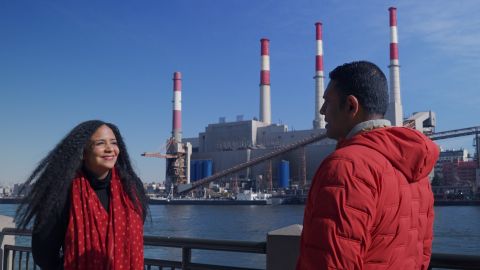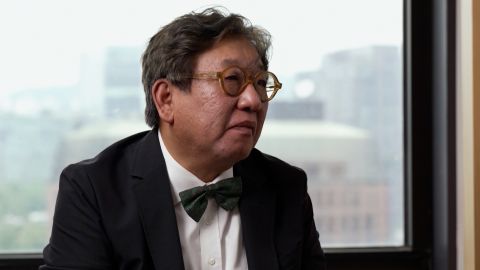fighting climate change means dealing
with greenhouse gas pollution like
carbon dioxide that's causing the earth
to warm new jersey has laid out plans to
slash the state's contribution to the
problem by transitioning away from
burning fossil fuels but finding ways to
pool harmful gases out of the air is
just as important and that's where
researchers and state officials are
hopeful that the garden states farmers
can help as part of our ongoing series
on the human stories of climate change
pearl and promise melissa rose cooper
reports
it's time for this young cow to quench
his thirst he may not realize it but he
and the other cattle running around the
grasslands here at duke farms in
hillsborough are helping to fight
climate change we know cows when they're
pasture rays are healthier for the
animal's sake we also know that the
vegetation and the soils are often
healthier too because they help increase
organic matter which helps plant life
in the soil food web which makes the
plants healthier deeper roots more
carbon storage deeper down an overall
benefit to the environment as carbon
dioxide which is one of the main
greenhouse gases driving climate change
is removed from the air climate change
is real it's happening it's happening
all over the world marjorie kaplan is
the associate director of the climate
institute at rutgers her team conducted
a study over the last year and a half
looking for ways farmers could assist
with mitigating climate change by
pulling carbon dioxide from the air and
storing it in vegetation and the soil in
general what farmers can do is they can
put down cover crops they can do no-till
agriculture the different kinds of
practices that i mentioned can
help to
not only sequester carbon but they can
provide for uh soil health they can help
reduce erosion and sediment
making its way into streams at duke
farms they're using the practice of
rotational grazing a method in use at
farms in the midwest with bison they
decided to give it a shot using cows
after realizing hay was causing harm to
endangered grassland birds agroecology
is basically using the principles of
ecology and what we know about natural
systems on the farm itself so what we
looked at is
historically where these birds came from
that are threatened endangered is in
those big great prairies that we had out
west the midwest
and what was
the common denominator what helped
maintain those habitats was those bison
herds that moved through periodically
and they would do a different kind of
grazing but this is a way of mimicking
that basically the idea is you move the
cows around
based on different things but usually
it's the height of the grass the idea is
to
move them to let the pastures rest and
re-vegetate soil organic matter is one
of the most important
soil quality factors
so generally more soil organic matter in
the soil
makes for better conditions for plant
growth and the resilience of
agricultural production
at the same time that organic matter is
a storage place
for the carbon and so the more carbon we
can get into the soil
through
photosynthesis through the plants and
get it
into the soil stored in the soil for
long term that will help us to some
extent
draw down the carbon dioxide levels in
the atmosphere the state department of
environmental protection and department
of agriculture have proposed a natural
and working land strategy which
officials estimate could remove nearly
11 tons of carbon from the air through
proper management of forests wetlands
and farms like this one it's just like
putting the pieces of the puzzle
together you need to reduce fossil fuel
use you need to
do better land management practices stop
removing trees what better way to
help out those plans by figuring out
what practices
can help mitigate
climate change for nj spotlight news i'm
melissa rose cooper
lead funding for paralymp promise is
provided by dr p roy vagalos and diana t
vagalos
major support is provided by the mark
haas foundation and sue and edgar
wachenheim iii and the cheryl and philip
milstein family
[Music]



